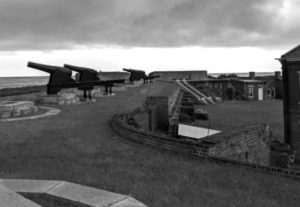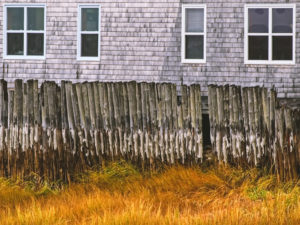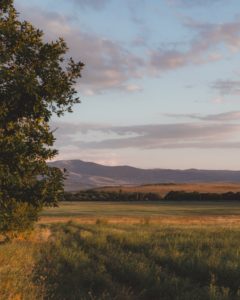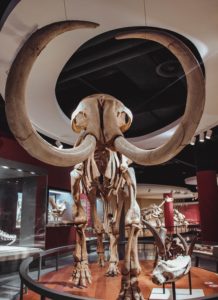Along the Lewis and Clark National Historic Trail, we serve to preserve the history of Lewis and Clark’s great exploration. But did you know there are so many other great sites that appear near the trail? The Dakota’s are rich in archaeological evidence of the first Native American peoples, military contact, ice age creatures and more! The following blog spotlights six sites that have been part of archaeological digs that have allowed historians to reconstruct the history of North and South Dakota. Visualize the past by visiting the Dakotas’ top historical sites on your next trip to the Great Plains!
Visiting the Dakotas’ top historical sites- North Dakota:
Fort Rice:

Researchers are able to reconstruct what top historical sites may have looked like through artifacts and traces left by the original site.
Located south of Mandan, Lewis and Clark would have directly passed by the land that would become Fort Rice 60 years later! Established by General Alfred H. Sully, this fort would become a site of important cultural interaction between ND military men and the Lakota tribe. The site was also a base for future expeditions: Fort Rice State Historic Site – State Historical Society of North Dakota (nd.gov).
Although none of the original buildings remain. Visiting the Dakota’s top historical sites such as Fort Rice allows for people to visualize the past. Visitors can see depressions and foundation lines as well as markers for where the buildings once stood.
Archaeologists have additionally uncovered physical evidence of North Dakota’s history at this site. Such evidence includes cultural objects such as dentalium shell beads, different glass beads coming in a variety of beautiful hues, and antique dinnerware. Check out this resource to learn more: Adventures in Archaeology Collections: Fort Rice | State Historical Society of North Dakota Blog (nd.gov).
Huff Archaeological site as part of visiting the Dakotas’ top historical sites:

The timber fence surrounding this top historical site would have likely been much taller.
While near Mandan be sure to check out Huff Archaeological site. This site was occupied by the ancestors of the Mandan tribe around 1450 B.C. This site has been part of many archaeological studies spanning from 1902-1999.
These studies allowed archaeologists to reconstruct what this village may have looked like. A ditch and a fence of 2,500 wooden stakes surrounding 3 sides of this village. Because of this it is believed that the prehistoric Mandan people had fortified their village to defend against conflict.
Such discoveries at this top historical site have granted insight into North Dakota’s history and it’s peoples heritage. Interested in exploring more about the Mandan tribe’s heritage? Visit Double Ditch Indian Village – Lewis and Clark National Historic Trail Experience as part of your North Dakota Lewis and Clark experience!
Menoken Indian Village Site:

See the beautiful Great Plains landscape at this top historical site.
Menoken Indian Village Site has ought to be one of North Dakota’s most influential archaeological sites! Archaeological research beginning in 1937 has revealed this site to be over 800 years old. Stone, metal, and shell artifacts have been crucial to understanding the history of North Dakota’s Plains Woodland people. For example, 90% of stone tools excavated were composed of Knife River Flint. Knife River Flint is a stone abundant in quarries over 60 miles away. What’s more, 3 artifacts made of raw copper date back to 1200 A.D. The closest raw copper source is from the far end of eastern Minnesota. Such rare materials appearing in this site have caused researchers to conclude that the Late Plains Woodland people were highly involved in trade.
Located just miles away from Bismarck, the walking tour of Menoken Indian Village is an experience you do not want to miss. Be sure that Menoken is a stop on your trip of visiting the Dakota’s top historical sites!
Visiting the Dakotas’ top historical sites- South Dakota:
Fort Thompson Mounds:

These man-made mounds are shown in striking contrast against the flat landscape of the Great Plains.
Running 6 miles long, the Fort Thompson Mounds are part of the Crow Creek reservation. Dated to be from 2450 B.C.E, the majority of these mounds serve a cemeterial purpose. Besides being a sacred burial site, these mounds also have evidence of ancient settlement. Such evidence includes pottery, stone tools, and stone hearths.
Enjoyed learning more about South Dakota’s history through this site? Walk in Lewis and Clark’s footsteps by visiting the top historic site Vermillion Spirit Mound: Spirit Mound – Lewis & Clark National Historic Trail (U.S. National Park Service) (nps.gov)
Mitchell Prehistoric Indian Village as part of visiting the Dakotas’ top historical sites:

Be free to explore and examine artifacts found from this site!
This 1,100 year old village is now a center for archaeology and tourism. Visitors can help further the understanding of South Dakota’s history through washing and sorting artifacts from the site. This educational historic site consists of museum exhibits, a store, and events making it the perfect stop for every visitor: Mitchell Prehistoric Indian Village (mitchellindianvillage.org).
While in Mitchell, be sure to check out the one-of-a-kind Corn Palace Mitchell Corn Palace, SD | Official Website and the Dakota Discovery Museum The Dakota Discovery Museum!
The Mammoth Site as part of visiting the Dakotas’ top historical sites:

Lions, and (saber-tooth) tigers, and Mammoths?!! Oh my! View the ice age animals that once roamed over the Dakotas.
Busy checking out some of our listings near badlands national park such as The Heritage Center at Red Cloud Indian School – Lewis and Clark National Historic Trail Experience, The White River Visitor Center – Lewis and Clark National Historic Trail Experience, He Sapa Wacipi Na Oskate (Black Hills Powwow & Expo) – Lewis and Clark National Historic Trail Experience?
If so, be sure to add visiting this top historical site known as the Mammoth site to your trip itinerary! This South Dakota “must-do” is another dig site that is also a museum.
Mammoth site is located in Hot Springs, South Dakota and encompasses a Pleistocene sinkhole. This sinkhole is the final resting spot of many ice-age organisms. Researchers have so far dug up 61 mammoths making it the World’s largest Mammoth Research facility.
Don’t miss this opportunity to experience some of South Dakota’s deepest history!
Interested in learning more about the top history sites around Lewis and Clark’s National Historic Trail? Explore Historic Places Along the Trail – Lewis and Clark National Historic Trail Experience today!
